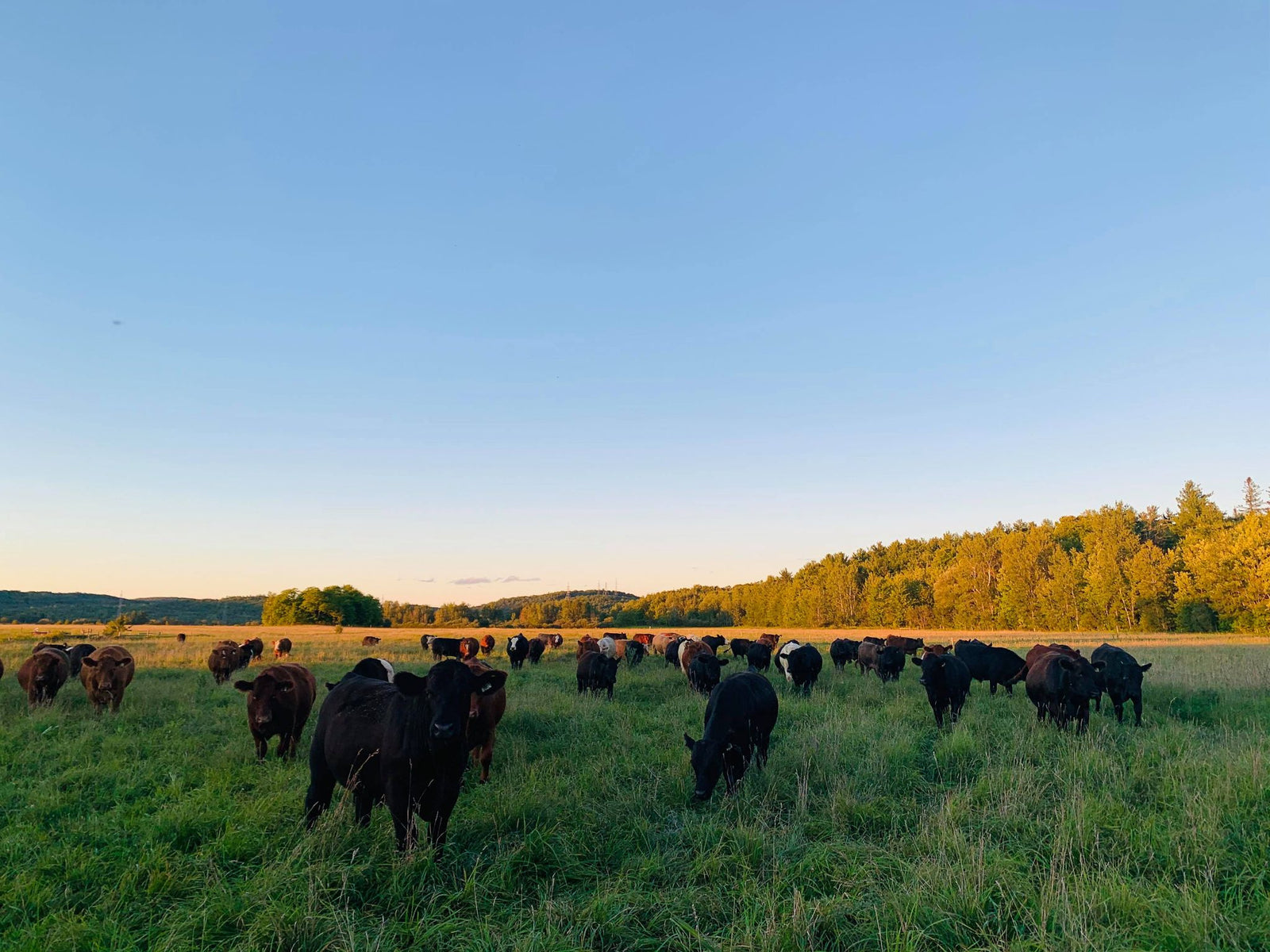
New Cows, Old Tricks: Adaptive Grazing Helps Farmers and Environment
Adaptive grazing is a unique style of livestock management designed to mimic the behavior patterns of wild herds. This produces healthy, high-quality livestock while protecting the land and the environment for generations to come.
Brylee Farm is one of a growing number of farms that use this cutting edge farming technique. By moving animals from one pasture to another, several times a day, the farm doesn’t just maintain soil health but also improves it.
Business-as-usual farming isn’t working
Conventional livestock farming forces animals to behave in ways that aren’t natural for them. Sometimes this is obvious. Feedlots, for example, are a human invention that do not match the habits of herd animals.
For thousands of years, bison and other herd animals roamed over vast plains. Their populations were held in check by predators. They traveled close together in herds to protect themselves, and they ate quickly and moved on. This constant movement meant that the plants they ate had time to regrow.
But cows in non-rotational grazing systems can easily overgraze, even when they have plenty of room. Without predators, they don’t have to move quickly. Given a chance, they will eat plants down to the roots, making it harder for them to recover.
Overgrazing depletes the soil of nutrients, reduces the amount of available forage, and causes erosion. Adaptive grazing is the solution.
A new path: grazing as nature intended
Adaptive grazing was developed in response to the land degradation caused by cattle ranching. Concerned farmers searched for a new type of holistic land management that would benefit not only people but the livestock and the land itself.
They realized the answer isn’t new at all – it’s old.
The principle behind adaptive grazing is simple – let nature do what it does best. Because plants and herbivores evolved alongside each other, when cows act more like wild ruminants, such as bison or elk, the soil, the plants, and the entire ecosystem, are improved.
Adaptive grazing for resilient ecosystems
In Québec, seasonal fluctuations in temperature and rainfall can be dramatic. This climate variation poses a major challenge for sustainable farming. Hotter, drier summers and irregular rainfall make farmland more vulnerable to overgrazing, trampling, and erosion.
We at Brylee, address this by reserving a stockpile of acres for cattle to graze in the dry summer months, when they need more food or to slow down our rotation and feed dry hay for a few weeks, allowing the rest of the pastures to have adequate rest time. In the rainier months, when the ground is wet and muddy, the cattle are rotated faster to prevent mud. These innovations have helped the land and livestock flourish despite unpredictable rainfall and varying climate patterns.
Good food comes from good land
Adaptive grazing can help turn back the climate clock by removing carbon from the atmosphere and storing it in the soil. This carbon is stored in the form of plants, which include the grasses on which livestock feed. More grasses mean more carbon storage.
Grasslands are responsible for around 30 percent of global carbon sequestration, making them critically important to stopping climate change. Not only that, but more carbon in the soil results in better soil structure, higher water retention, and greater nutrient content.
The benefits of adaptive grazing on the soil don’t stop there. Keeping livestock together in a modest-sized area benefits the soil by causing the herd to spread manure evenly throughout their pasture. This in turn improves soil fertility and protects it from erosion.
Moving livestock from one pasture to another ensures that they eat only the choicest parts of the fodder available. They eat the most nutritious part of every plant but leave enough behind to let the plants recover fully for the next rotation.
This keeps the animals healthy, while the grasses can “rest” between grazings. As they continue to grow, the land becomes more productive. And improving livestock diet and health makes their meat tastier and more nutritious – a benefit that is passed on to customers.
A few farmers are starting a movement
The key is to get more farms like ours, to start using adaptive grazing techniques. It isn’t always easy – moving herds frequently takes effort.
Adaptive grazing demands a holistic understanding of the ecosystem, extensive planning, and careful management. It is knowledge and labor-intensive. But the best meat comes from raising healthy animals on healthy land. The benefits are worth it.


